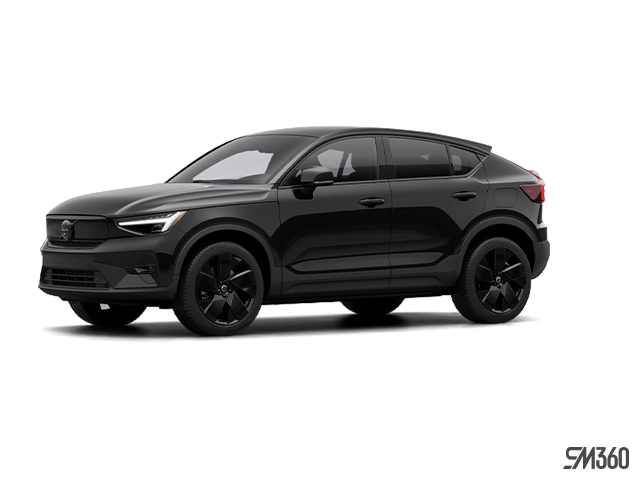
Photo for illustrative purposes only.
Find out moreVolvo Cars Mississauga
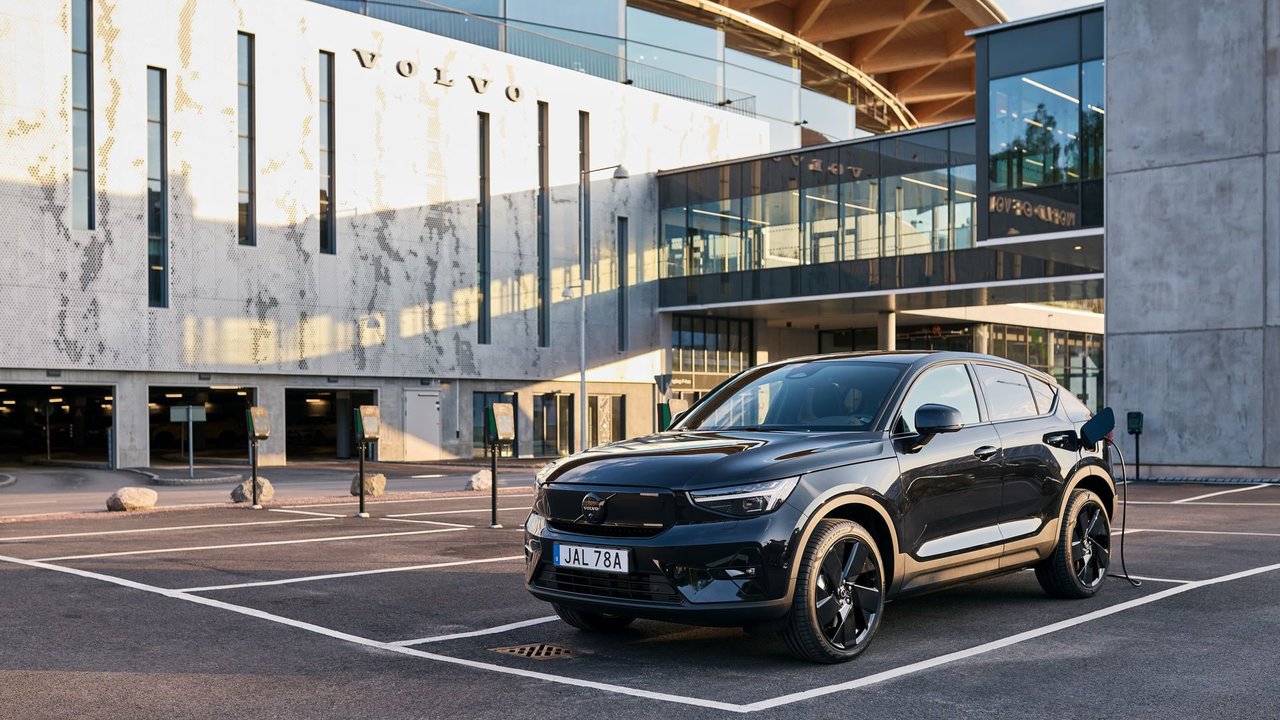
Aerodynamic efficiency directly impacts electric vehicle range. Air resistance increases exponentially with speed, requiring progressively more energy to overcome drag as velocity rises. For electric vehicles operating on limited battery capacity, reducing aerodynamic drag translates directly to extended range—every percentage point improvement in drag coefficient adds kilometres to maximum distance on a single charge.
The Volvo EC40 applies coupe-style design language to reduce aerodynamic drag while maintaining SUV-inspired ground clearance and cargo utility. With a drag coefficient of 0.319, the EC40 achieves lower air resistance than conventional SUV shapes without sacrificing the interior space and versatility that define the crossover segment. For Ontario drivers prioritizing efficiency alongside distinctive aesthetics, the EC40 demonstrates how form and function align in electric vehicle design.
Understanding Aerodynamic Drag and Its Impact
Aerodynamic drag force is calculated using the equation: Drag = 0.5 × air density × frontal area × drag coefficient × velocity². This formula reveals that drag increases with the square of velocity—doubling speed quadruples drag force. At highway speeds, aerodynamic resistance becomes the dominant force requiring power to overcome.
Electric vehicles operate at disadvantage compared to gasoline vehicles when addressing aerodynamic penalties. Internal combustion engines produce excess heat that must be managed through radiators and cooling systems, necessitating large grille openings that create significant drag. Electric motors generate far less heat, allowing designers to close or minimize front openings, reducing drag substantially.
The drag coefficient (Cd) represents how efficiently a shape moves through air, independent of size. Lower numbers indicate better aerodynamic performance. The EC40's 0.319 Cd compares favorably to conventional SUVs that typically range from 0.33 to 0.38. Even a 0.02 reduction in Cd can extend range by 3-5% at highway speeds.
Frontal area multiplies with drag coefficient to determine total drag. The EC40's frontal area measures 2.54 m²—relatively compact due to its car-based platform and sloping roofline. Larger SUVs with bluff front faces and taller rooflines present greater surface area to oncoming air, creating more resistance regardless of Cd.
Coupe-Style Roofline and Its Aerodynamic Benefits
The EC40's defining characteristic is its sloping rear roofline that descends toward the tail in a coupe-like profile. This design choice serves multiple aerodynamic purposes:
Reduced rear end height allows air flowing over the vehicle to transition more gradually from roof to trunk, minimizing flow separation. When airflow separates from the vehicle surface, it creates turbulent wake behind the vehicle—low-pressure areas that effectively "pull back" on the vehicle, increasing drag. The gradual slope keeps air attached longer, reducing wake turbulence.
Smoother roofline curve eliminates the sharp transition between roof and rear window common in traditional SUVs. Abrupt changes in surface angle force air to change direction quickly, creating turbulence. The EC40's continuous curve from windshield to rear spoiler provides a smooth path for airflow.
Integrated rear spoiler at the trailing edge of the roof creates a clean separation point for airflow leaving the vehicle. Rather than tumbling chaotically off the rear end, air separates at the spoiler and flows off in a more organized pattern, reducing drag and improving high-speed stability.
Reduced rear window angle compared to upright SUV designs further contributes to drag reduction. Steeper angles create pressure against the glass as air flows upward, while the EC40's slope allows air to flow across the surface with less resistance.
These aerodynamic benefits do require trade-offs. The sloping roofline reduces maximum cargo height compared to upright designs, and rear seat headroom decreases slightly in the interest of efficiency. However, Volvo's engineers managed these compromises to maintain practical utility while achieving meaningful drag reduction.
Closed Grille Design and Front-End Airflow
Electric vehicles eliminate the need for large radiator openings that characterize conventional vehicle front ends. The EC40 features a mostly closed front face with only minimal openings for battery cooling and HVAC functions.
This design choice yields substantial aerodynamic benefits. Open grilles force air into the engine bay, creating turbulence around mechanical components before exiting underneath the vehicle or through wheel wells. This air path generates significant drag.
The EC40's closed shield directs air smoothly over and around the vehicle rather than through it. The small openings that do exist are carefully shaped and positioned to minimize drag while providing necessary cooling airflow. Active grille shutters can close these openings entirely when additional cooling isn't required, further reducing drag during steady-state highway cruising.
The smooth front surface also contributes to the EC40's distinctive appearance. Without a traditional grille pattern, the front face displays Volvo's diagonal slash across a body-color panel, creating a modern, minimalist aesthetic that signals the vehicle's electric powertrain.
Underbody Smoothness and Airflow Management
While visible exterior surfaces receive primary attention in aerodynamic discussions, underbody design significantly impacts overall drag. Conventional vehicles feature exhaust systems, driveshafts, and suspension components that create turbulence as air passes underneath.
The EC40's electric architecture allows for smoother underbody design. Without exhaust system routing or longitudinal driveshafts, the floor can be flatter with fewer obstructions. Smooth panels cover the battery pack, creating an uninterrupted surface for air to flow across.
This smooth underbody reduces drag in two ways. First, it minimizes turbulence created by air striking protruding components. Second, it helps manage air pressure underneath the vehicle. Smooth flow prevents low-pressure pockets that can increase lift—undesirable at highway speeds as it reduces tire loading and grip.
Rear diffuser elements help manage air exiting from underneath the vehicle. These upward-angled channels direct air smoothly back into the surrounding atmosphere rather than allowing it to create chaotic turbulence behind the vehicle. The diffuser also helps balance front and rear downforce, contributing to high-speed stability.
Wheel Design and Aerodynamic Efficiency
Wheels represent one of the most aerodynamically challenging vehicle components. They rotate through the airstream, creating complex turbulence patterns. Air entering the wheel wells creates high-pressure areas that increase drag, while the spinning wheels themselves generate turbulent wakes.
The EC40 addresses these challenges through several design strategies:
Wheel arch design minimizes the gap between tire and body. Tighter clearances reduce the volume of air entering wheel wells, limiting turbulence generation. The wheel arches are carefully shaped to guide air smoothly around the tire rather than allowing it to pool in the wheel well.
Aerodynamic wheel designs available on the EC40 feature flat or slightly dished faces rather than open spokes. These designs reduce the amount of air that can enter the wheel's interior, where it creates drag through interaction with brake components and suspension elements. Some wheel designs include partial covers that further smooth airflow.
Wheel well liners smooth the interior surfaces of wheel arches, preventing air from becoming trapped in gaps between body panels and creating pockets of turbulence. These liners guide air entering the wheel well back out smoothly rather than allowing chaotic tumbling.
The choice between different wheel sizes involves aerodynamic trade-offs. Larger wheels typically increase drag due to greater frontal area and mass that must be accelerated rotationally. The EC40 offers 19-inch wheels standard, with 20-inch options available. The smaller size provides slightly better efficiency, while larger wheels improve aesthetics and may enhance handling response.
Real-World Range Impact of Aerodynamic Design
The EC40's aerodynamic efficiency translates to tangible range improvements. The Single Motor Extended Range variant achieves 480 kilometres under EPA testing, while the more powerful Twin Motor version reaches 431 kilometres—both using the same 82 kWh battery (79 kWh usable).
To understand aerodynamics' contribution, consider that the closely-related EX40 (formerly XC40 Recharge), which uses a more upright SUV shape, achieves 476 kilometres for Single Motor and 418 kilometres for Twin Motor. The EC40's superior aerodynamics add approximately 4 kilometres to Single Motor range and 13 kilometres to Twin Motor range compared to its mechanically identical but less aerodynamic sibling.
These gains become more significant at highway speeds where aerodynamic drag dominates. Urban driving—characterized by frequent stops, lower speeds, and opportunities for regenerative braking—shows smaller aerodynamic advantages. Highway driving at 100-120 km/h, where drag forces are substantial, reveals the full benefit of the EC40's shape.
For drivers who frequently travel Highway 401 between Mississauga and Toronto, or take regular trips to Ottawa or Niagara region, these aerodynamic improvements provide meaningful practical benefit by extending the distance achievable on each charge or reducing the frequency of charging stops on longer journeys.
Interior Space Trade-offs and Cargo Capacity
The coupe-style roofline necessarily impacts interior dimensions compared to upright designs. The EC40's rear headroom measures 932 mm—adequate for most adults but slightly less than the EX40's 974 mm. Taller rear passengers may notice reduced clearance, particularly if they prefer upright seating positions.
Cargo capacity reaches 480 litres behind the second row with seats upright, expanding to 1,196 litres maximum with seats folded flat. These figures trail the EX40's 578 litres and 1,328 litres respectively—a direct consequence of the sloping roofline that reduces maximum cargo height at the rear of the load area.
However, the EC40's cargo floor length remains identical to the EX40. Long items like skis, lumber, or flat-packed furniture fit equally well in both vehicles. The reduced capacity primarily affects tall items loaded at the rear of the cargo area. Items positioned forward or lying flat encounter the same space available in either vehicle.
The 59-litre underfloor storage compartment provides secure space for charging cables, valuables, or items that need separation from the main cargo area. A 21-litre frunk (front trunk) adds additional secure storage accessible from the front of the vehicle.
For typical Mississauga use—weekly grocery shopping at Longo's or Whole Foods, transporting sports equipment between Streetsville and various athletic facilities, or loading shopping bags from Square One or Heartland Town Centre—the EC40's cargo capacity proves sufficient. Only those regularly transporting particularly tall items need consider whether the reduced height creates practical limitations.
Single Motor vs. Twin Motor Powertrain Options
The EC40 is offered in two powertrain configurations, each with distinct performance and efficiency characteristics:
Single Motor Extended Range uses a rear-mounted electric motor producing 248 horsepower and 310 lb-ft of torque. This rear-wheel-drive configuration achieves 0-100 km/h in 7.3 seconds—brisk but not aggressive. Range reaches 480 kilometres on a full charge, optimized through the efficiency of powering only two wheels.
Twin Motor adds a front electric motor, creating all-wheel drive with combined output of 402 horsepower and 494 lb-ft of torque. Acceleration improves dramatically to 4.7 seconds 0-100 km/h—entering performance vehicle territory. Range decreases to 431 kilometres due to the additional motor's weight and the energy required to power four wheels instead of two.
Both powertrains use the same 82 kWh battery pack, with 79 kWh usable capacity. The range difference stems entirely from power consumption patterns rather than battery size. The Single Motor's lower power output and simpler drivetrain operate more efficiently, particularly during steady-state cruising.
For Mississauga drivers, the choice depends on priorities. Those maximizing range and operating costs benefit from Single Motor efficiency. Those prioritizing performance, all-weather traction, or simply enjoying spirited driving find the Twin Motor's capabilities compelling despite the range penalty.
Charging Infrastructure and Daily Usability
Both EC40 variants support DC fast charging at up to 153 kW peak power. At this rate, charging from 10% to 80% requires approximately 28 minutes. This speed accommodates longer trips where charging aligns with meal or rest stops.
For daily Mississauga use, home charging typically provides sufficient energy replenishment. A Level 2 home charger operating at 11 kW fully charges the battery in approximately 8 hours—easily accomplished overnight. Even a standard 120-volt household outlet can add 30-40 kilometres of range overnight, covering many daily driving patterns.
Public charging continues expanding across Mississauga and the Greater Toronto Area. Shopping destinations like Square One, Erin Mills Town Centre, and Heartland Town Centre offer Level 2 charging. DC fast chargers are positioned along major highways including the 401, 403, and QEW for longer-distance travel.
The EC40's Google built-in navigation system integrates charging station locations and availability. The system can plan routes for longer trips that exceed single-charge range, automatically including charging stops at optimal locations based on current battery level, destination distance, and charger availability.
Climate Control Impact on Range
Ontario's temperature extremes affect electric vehicle range. The EC40's climate control system must heat or cool the cabin using battery power, unlike gasoline vehicles that utilize waste engine heat for cabin warming.
Winter heating is most range-intensive. At -20°C, heating the cabin to comfortable temperature can reduce range by 30-40%. A full-charge range of 480 kilometres might decrease to 290-335 kilometres under extreme cold combined with sustained cabin heating.
Summer air conditioning affects range less dramatically—typically 10-15% reduction on very hot days. The battery's thermal management system must also work harder to keep cells within optimal temperature range, drawing additional power.
Pre-conditioning the cabin while connected to shore power minimizes these impacts. Setting departure time through the Volvo Cars app allows the system to heat or cool the cabin before leaving, using grid power instead of battery charge. The vehicle is comfortable when you enter, and the battery's full charge is preserved for driving.
Heat pump technology in the EC40 improves cold-weather efficiency compared to conventional resistance heating. Heat pumps move thermal energy rather than generating it through electrical resistance, requiring less power for the same heating output. This technology helps mitigate winter range reduction, though cold weather still impacts range more than moderate temperatures.
Comparing EC40 to Conventional SUV Shapes
|
Metric |
EC40 (Coupe Design) |
Typical Compact SUV |
|---|---|---|
|
Drag Coefficient (Cd) |
0.319 |
0.33 - 0.38 |
|
Frontal Area |
2.54 m² |
2.5 - 2.7 m² |
|
Range (Single Motor) |
480 km |
400 - 460 km (varies widely) |
|
Rear Headroom |
932 mm |
950 - 980 mm |
|
Cargo Capacity (Max) |
1,196 L |
1,100 - 1,400 L |
|
Highway Efficiency Advantage |
~5-8% better |
Baseline |
Design Philosophy: Form Following Function
The EC40 represents design philosophy where aerodynamic function shapes exterior form. Rather than styling a vehicle to match aesthetic trends and then attempting to improve aerodynamics within those constraints, Volvo's designers prioritized efficiency from the initial concept.
This approach created the coupe-style roofline, smooth front face, and clean body surfaces. The resulting design happens to align with contemporary preference for sleeker, more dynamic crossover shapes, but the styling emerged from functional requirements rather than pure aesthetics.
Interior materials reflect Scandinavian design principles—minimalist surfaces, sustainable materials, and careful attention to tactile quality. The dashboard is uncluttered, with most controls integrated into the center touchscreen. Physical buttons are limited to essential climate controls and window switches.
Sustainable materials appear throughout the cabin. Recycled plastics form structural components and trim pieces. Seat fabrics incorporate recycled fibers. Even the optional leather undergoes tanning processes designed to minimize environmental impact.
Technology Integration and User Experience
The EC40 includes Google built-in as standard, integrating Google Maps, Google Assistant, and Google Play directly into the vehicle's infotainment system. This native integration operates without phone connection, though Apple CarPlay and Android Auto remain available.
The 9-inch center touchscreen displays vehicle controls, climate settings, and entertainment options. The interface is organized in tiles that can be customized to emphasize frequently-used functions. Google Assistant allows voice control—requesting navigation destinations, adjusting climate, or selecting music without touching the screen.
The 12.3-inch digital instrument cluster displays vehicle information including speed, battery level, range remaining, and power consumption. The display format can be adjusted to emphasize different information types based on driver preference.
Over-the-air software updates add features and functionality after purchase. The vehicle downloads updates when connected to WiFi, installing them during convenient times when parked. This capability allows the EC40 to improve over time rather than remaining static from the moment of purchase.
Safety Technology Suite
The EC40 includes Volvo's comprehensive safety suite as standard equipment across all variants:
Collision avoidance uses cameras and radar to detect vehicles, pedestrians, cyclists, and large animals. The system provides warnings and can apply automatic emergency braking if the driver doesn't respond to imminent collision risk.
Blind spot information system monitors adjacent lanes, alerting when vehicles occupy blind spots. If the driver signals a lane change while a vehicle is present in the blind spot, the system provides visual and audible warnings.
Cross traffic alert monitors for approaching vehicles when reversing, detecting traffic crossing behind the vehicle. Auto brake can engage if collision risk is detected and the driver hasn't responded.
Lane keeping aid monitors road markings and provides steering assistance if the vehicle begins drifting out of its lane without signaling.
Pilot Assist combines adaptive cruise control with steering assistance to help maintain lane position and following distance on highways. The system requires constant driver attention and hands on the steering wheel.
Winter Performance Considerations
Ontario winters present specific challenges for electric vehicles, but the EC40's design addresses many concerns:
The Twin Motor variant's all-wheel drive provides substantial traction advantage in snow and ice. Power distribution between front and rear axles adjusts instantaneously based on available grip, maximizing traction during acceleration on slippery surfaces.
Ground clearance of 171 mm provides adequate height for navigating snow accumulation in unplowed parking lots or at the end of residential driveways. While not matching SUVs with 200+ mm clearance, the EC40's height handles typical winter conditions encountered in Mississauga.
Battery thermal management maintains optimal operating temperature even in extreme cold. The system heats the battery when necessary, protecting performance and longevity. However, this heating draws power that would otherwise be available for driving, contributing to winter range reduction.
Winter tires remain essential regardless of all-wheel-drive capability. All-wheel drive improves acceleration traction but doesn't enhance braking or cornering grip—only proper winter tires provide those critical benefits. The EC40's tire sizes accommodate common winter tire options available from Canadian retailers.
Experience the EC40 at Volvo Cars Mississauga
The Volvo EC40 combines coupe-style aesthetics with aerodynamic efficiency, achieving a 0.319 drag coefficient that extends range to 480 kilometres for Single Motor variants and 431 kilometres for Twin Motor models. The sloping roofline reduces air resistance while maintaining 1,196 litres of maximum cargo capacity and practical daily utility.
Visit Volvo Cars Mississauga to experience how the EC40's aerodynamic design and distinctive styling suit your driving needs across Mississauga and the Greater Toronto Area. Our team can demonstrate both Single Motor and Twin Motor variants to help you evaluate which powertrain configuration aligns with your priorities.

Photo for illustrative purposes only.
Find out more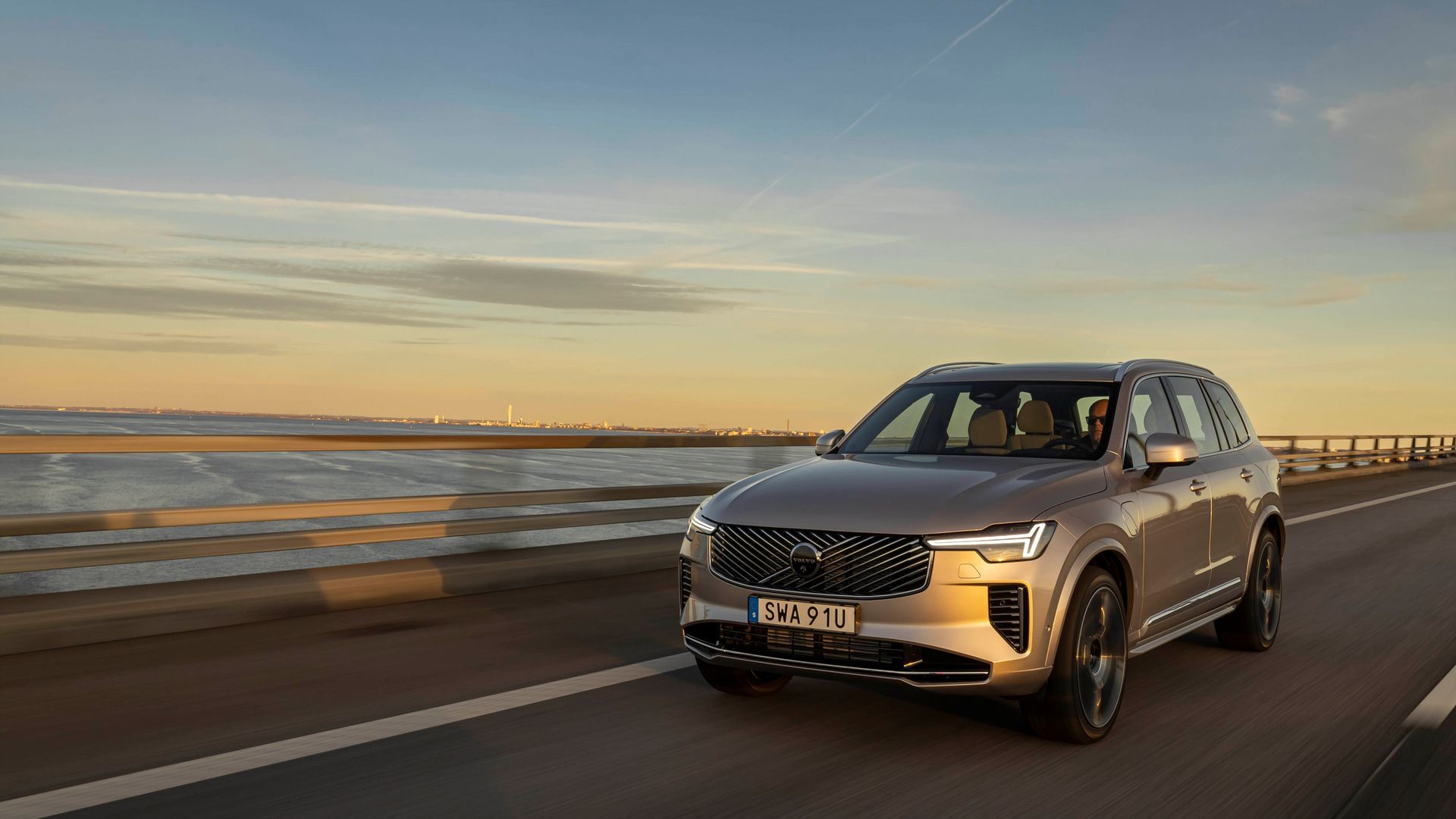
What Mississauga Drivers Should Know Before Buying a Plug-In Hybrid
Plug-in hybrid vehicles occupy a unique space in today's automotive landscape. They provide electric driving for your daily commute while...
Read more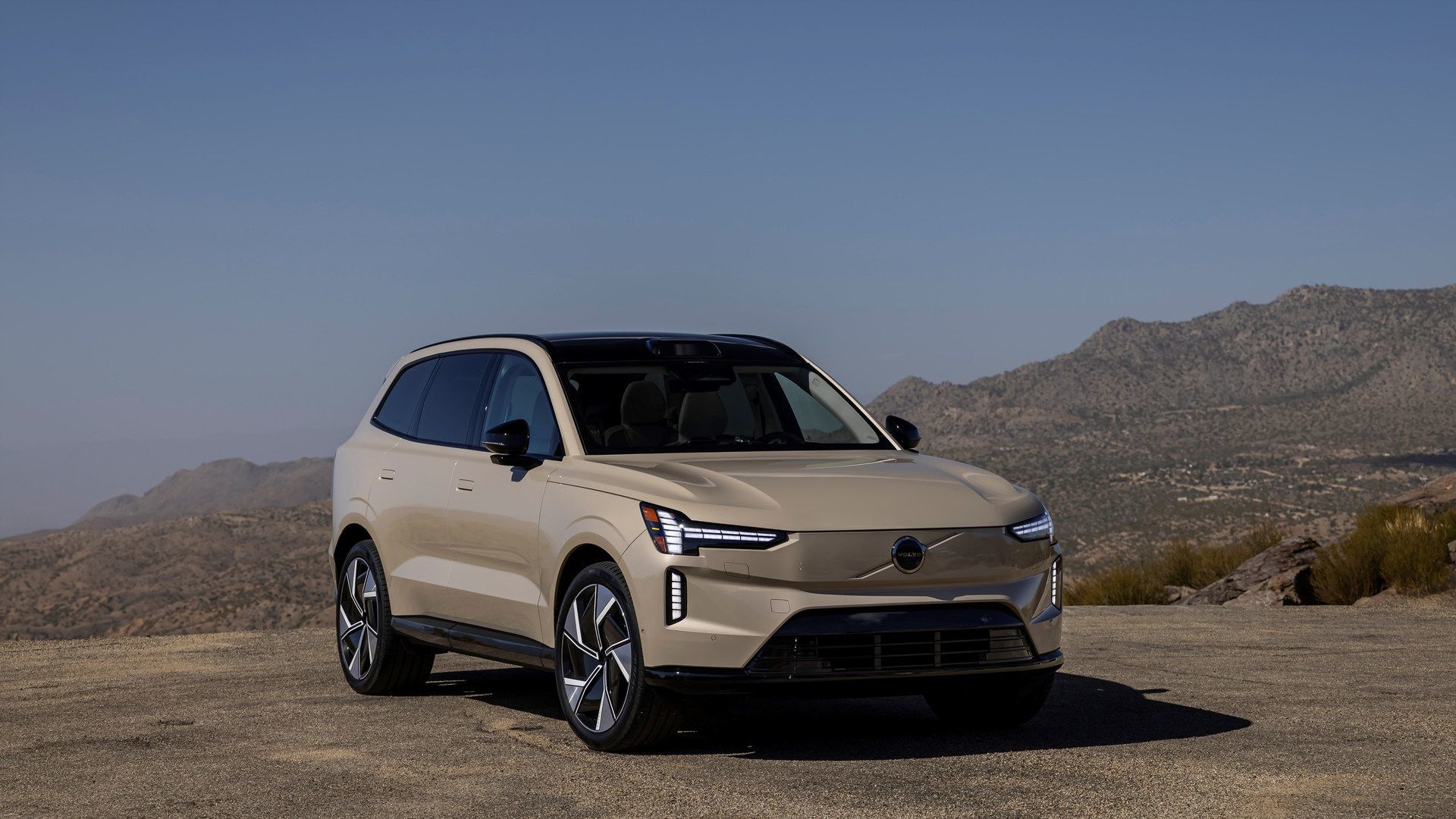
2025 Volvo EX90: Understanding Trim Levels and Features
Volvo's flagship electric SUV arrives with two distinct trim configurations. The 2025 EX90 Twin Motor Plus establishes the baseline equipment...
Read more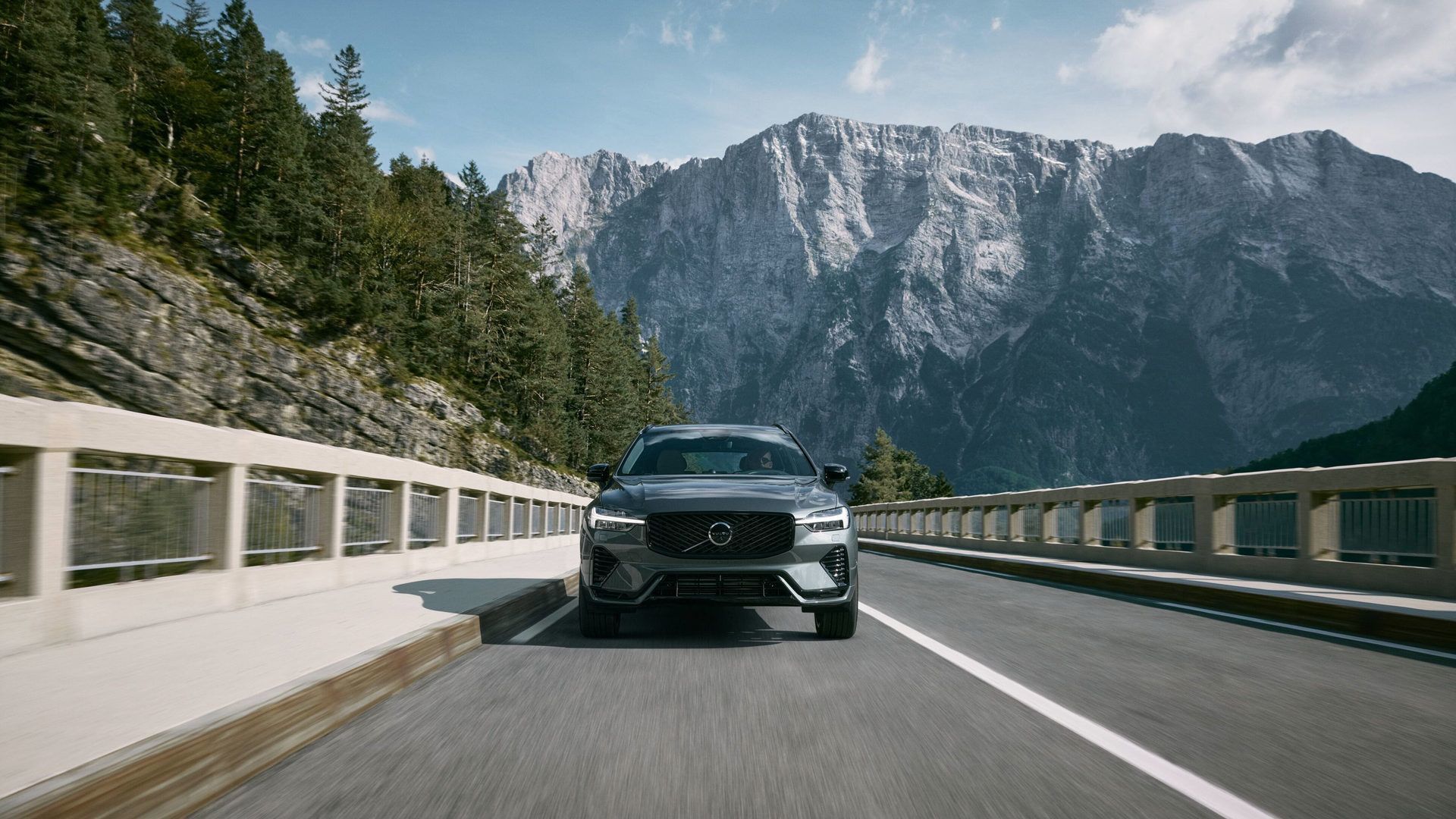
5 Safety Features That Make 2026 Volvo SUVs Stand Out in Ontario
Safety has been Volvo's calling card since the company invented the three-point seatbelt in 1959 and made the patent freely available to the entire...
Read more